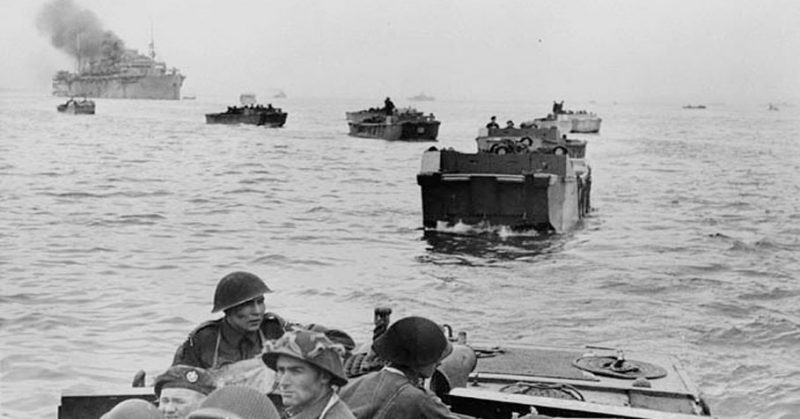A massive electronic survey of the coastal seabed at the D-Day Normandy Landing site is revealing never-before-seen visuals of what lies at the site of the greatest naval invasion in history.
A team of international researchers surveyed 511 km2 producing a prodigious 11TB of information.
Employing Hypack Hydrographic surveying software, the team was able to integrate into an excess of 4 billion soundings using multi-beam sonar to render high-resolution color three-dimensional pictures of the seabed, plus numerous relics.
The seabed is a massive archaeological location, explained Harold Orlinsky. But, the submerged items abandoned by the historical event are disappearing. Thousands of troops lost their lives, so the surveying program is to honor those who died, and to explore the relics before they disappear.
Sea conditions were terrible during the landings and resulted in the loss of substantial amounts of military equipment. As an example, the survey showed submerged tanks in relatively good condition that had sunk before reaching the beach. Nicknamed ‘Donald Duck tanks,’ the DD or Duplex Drive tanks had been tailored with collapsible flotation screens to make them sink-resistant. The tank’s engine powered a propeller to move them forward.
The survey displayed that many sank. This was attributed to the rugged sea situation and because some were launched too far from the beach. Those that reached the beach have been attributed to tank crews that had peacetime sailing experience.
Wooden boats after 75 years have disappeared but a selection of metal boats, including Higgins’ boats, has survived. Designed to deliver amounts of equipment and men from ship to shore without the need of a harbor, they included a variety: the LCVP’s (Land Craft, Vehicle, Personnel), distinct craft made to transfer jeeps and infantry platoons to shore. With a front incline, unloading time was cut which reduced the number of lives lost.
They also located the German submarine U390, sunk by depth charges on July 5, 1944, Maritime Journal reported. However, the survey did not report finding any unexploded ordnance.
Stressing the prominence of not forgetting D-Day, Orlinsky said Operation Overlord was a pivotal moment in the free world’s history, and it was a very memorable experience to participate as a team member.
Currently, 27 war cemeteries contain the remains in excess of 110,000 dead from both opponents: 650 Poles, 5,002 Canadians, 17,769 British, 9,386 Americans and 77,866 German.
